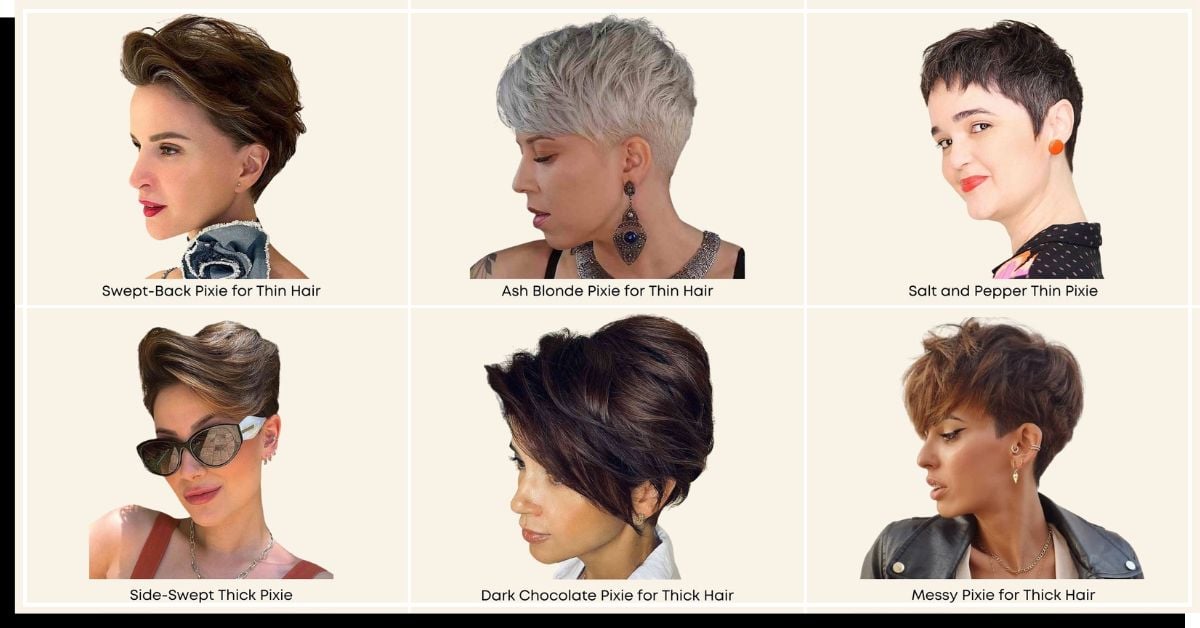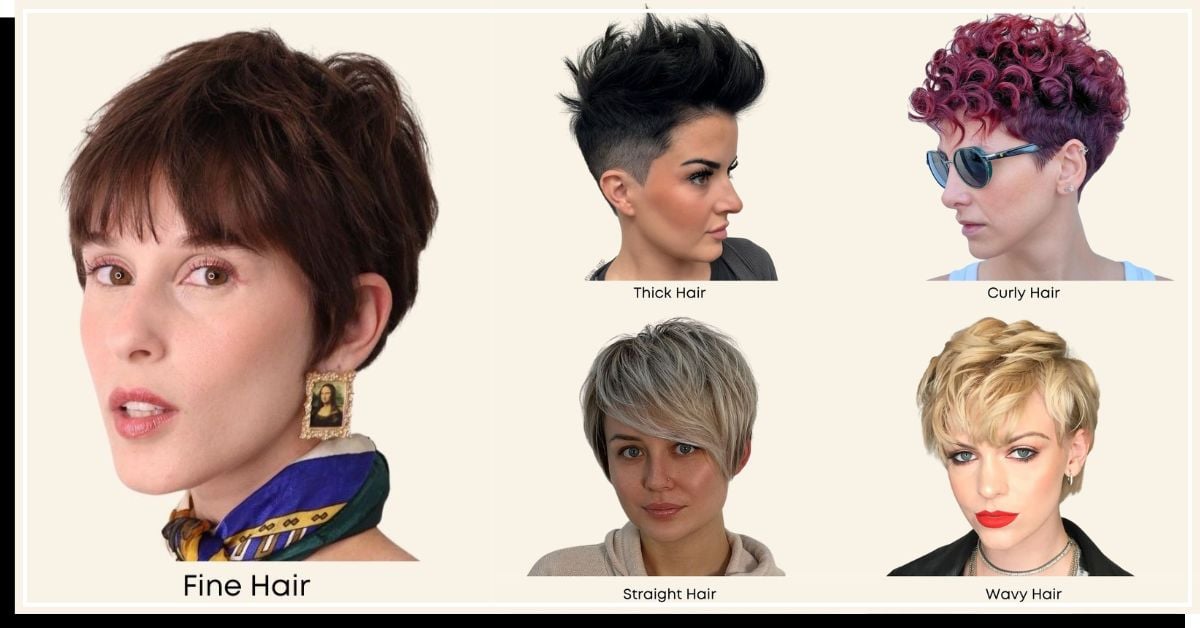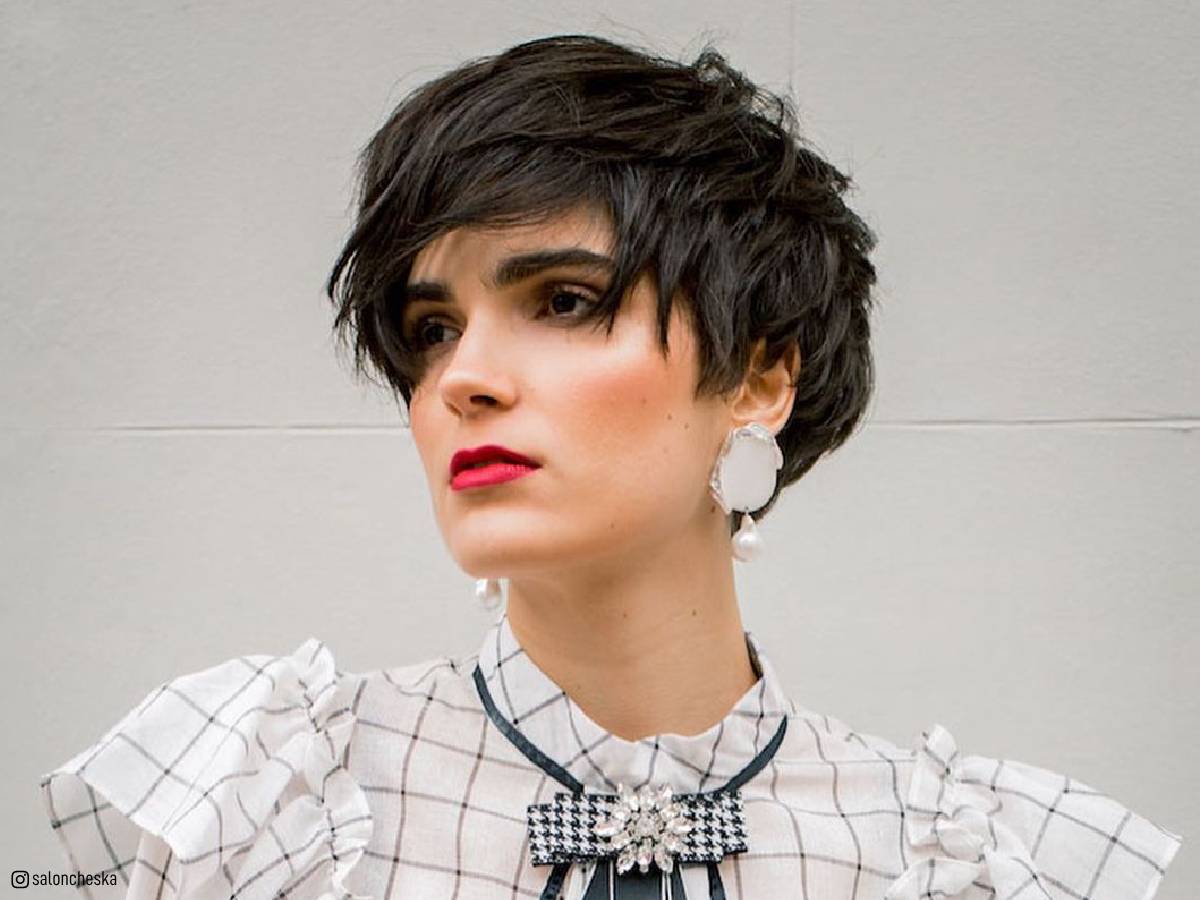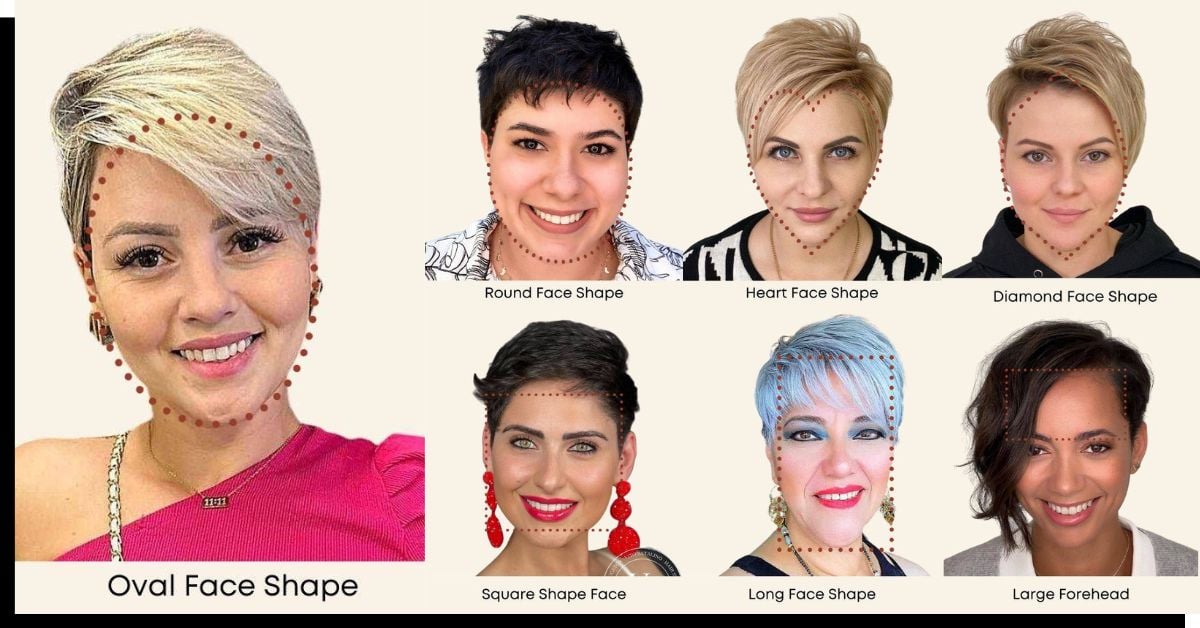Choosing the perfect pixie cut for yourself can be an exciting yet daunting task. With countless variations and styles, it’s important to find one that complements your face shape, hair type, and personality. In this article, you’ll find useful tips to help you make the right decision in selecting a pixie cut that not only looks great but also fits your lifestyle.
A well-chosen pixie cut can enhance your facial features and even soften or accentuate specific aspects of your face. It’s essential to consider your hair density, texture, and type when picking the right pixie cut for you. Adding color and highlights to your pixie cut can further accentuate your style and bring out your unique personality. To ensure that you select the best pixie cut, consulting a professional stylist is highly recommended.
Key Takeaways
How A Pixie Affects Your Face
Oval Face Shape
If you have an oval face shape, you’re in luck. This face shape is well-suited for many hairstyles, including pixie cuts. Keep your pixie cut slightly longer to frame your face and avoid going too short, as it may make your face appear longer. Add some texture and layers to add dimension and balance to your overall look.
Round Face Shape
For those with a round face shape, a pixie cut can help create the illusion of a more elongated face. Opt for a longer pixie cut with side-swept bangs and added volume at the top. Asymmetrical cuts can also be a great option for you, as it creates angles that flatter your face.
Heart Face Shape
A pixie cut is perfect for heart-shaped faces, as it can minimize the appearance of a wide forehead. Choose a pixie cut with longer bangs, which will balance your face by drawing attention to your eyes and cheekbones. Consider a piecey, textured pixie that adds volume towards the bottom of your face, giving it a more balanced appearance.
Square Face Shape
If you have a square face shape, a pixie cut can soften your strong, angular features. To create a harmonious look, opt for a softer pixie cut with a slightly longer top and layers around your face. This will help to reduce the prominence of your jawline and create a more gentle appearance.
Diamond Face Shape
A pixie cut can enhance your diamond-shaped face by emphasizing your cheekbones and diminishing the width of your forehead. Go for a cut with more volume at the top and side-swept bangs to bring attention to your eyes. Soft layers and a slight tapering towards the back will also balance out your face shape.
Long Face Shape
A pixie cut can be a perfect match for a long face shape, as it can visually shorten the length of your face. Choose a softer, more voluminous pixie cut with side-swept bangs to help balance out your features. Avoid extremely short cuts, as they can elongate your face even more.
Large Foreheads
If you have a large forehead, a pixie cut can help minimize its prominence. Opt for a cut with longer, side-swept bangs or rounded bangs that cover a portion of your forehead. This will create the illusion of a shorter, more balanced face and draw attention to your eyes and cheekbones. Remember to keep your pixie cut soft and voluminous, as this will help to create a more harmonious look.
Hair Density: Making a Pixie Work With Yours

Fine and Thin Hair
A pixie cut can work wonders for fine hair and thin hair by adding a boost of volume. The key is to choose a style with layers and texture, giving the illusion of thicker hair. Opt for a cut with a longer length on top for added versatility; this allows you to create various looks using different styling techniques.
When styling your pixie, use products that enhance volume and provide some lift at the roots. Volumizing mousses and dry texturizing sprays are ideal choices, as they won’t weigh your hair down. Remember to be mindful of the amount of product you’re using – too much can make fine hair appear greasy or flattened.
Thick Hair
For those with thick hair, a pixie cut can actually help to lighten the load and make your hair more manageable. Consider a cut incorporating short, choppy layers to remove some of the bulk and allow your hair to fall more naturally. It’s important to find a skilled hairstylist who understands how to work with thick hair, as they can create a haircut that accommodates your specific texture and density.
Styling for thick hair can be as simple as adding some styling cream or a smoothing serum to eliminate frizz and keep your locks looking polished.
Analyzing Your Hair Texture and Type

Fine Hair
If you have fine hair, your pixie cut should focus on creating volume and movement. Opt for a cut that features shorter layers on top and longer layers at the sides to achieve this effect. A tapered cut can work nicely for this hair type as it will create the illusion of thickness. Avoid very short or blunt cuts, as these can make fine hair appear thinner.
Thick Hair
For thick hair, a pixie cut can be a great way to reduce bulk and make your hair more manageable. Consider a cut with long layers on top and short, blended layers on the sides and back. This will help remove excess weight and make your hair easier to style. Make sure your stylist uses thinning shears to remove some of the density, but avoid over-thinning as it can promote frizz.
Curly Hair
Curly hair can be more challenging when it comes to pixie cuts, but don’t let that discourage you. Choose a cut that works with your natural curl pattern, rather than against it. Ask your stylist for a graduated cut that allows for longer layers on top while keeping the sides and back shorter. This will help to maintain your curls’ shape and avoid a triangle effect.
Wavy Hair
If your hair is naturally wavy, a pixie cut can enhance its texture and create a beachy, tousled look. Opt for a cut with soft layers all around, but avoid overly short or blunt cuts. This will help to maintain the natural movement of your waves. A subtle side part can also accentuate your hair’s waviness and provide a flattering frame for your face.
Straight Hair
Straight hair can benefit from a pixie cut that adds depth and dimension. Choose a cut with lots of texture and layers to create visual interest. Experiment with asymmetric cuts or incorporate a fringe to break up the straight lines. Shorter layers on top can also help to create some lift and volume.
Lifestyle & Personality: Is a Pixie a Good Fit?
When considering a pixie cut, it’s important to consider how it will fit with your lifestyle and personality.
Evaluate your daily routine. A pixie cut generally requires more frequent trims to maintain its shape. If you’re always on the go and have little time for hair appointments, this style may not be the best choice for you. On the other hand, if your schedule allows for regular salon visits, a pixie cut could be a great option as it’s relatively low maintenance on a daily basis.
Consider your personal style. A pixie cut can be both edgy and chic, which makes it a versatile choice for various fashion sensibilities. If you enjoy experimenting with different looks, a pixie cut can offer a fresh canvas on which to showcase your unique sense of style.
Think about your workplace. Before committing to a pixie cut, consider your professional environment. If you work in a conservative setting, a pixie cut may not be the best choice. However, if your workplace embraces creativity and self-expression, a pixie cut might be a splendid way to showcase your personality.
Reflect on your face shape. Pixie cuts work well with many face shapes, but they can be especially flattering on those with strong features or well-defined cheekbones. If you’re unsure whether a pixie would suit your face shape, consult with a stylist who can offer personalized recommendations based on your unique features.
Be confident. A pixie cut can be a bold statement, and confidence is key to rocking this look. If you’re someone who thrives on embracing change and trying new things, a pixie cut could be the perfect hairstyle to express your fearless side.
By carefully considering these factors, you can determine whether a pixie cut is a good fit for your lifestyle and personality. Remember, it’s essential to choose a hairstyle that reflects who you are and what you want to convey to the world.
The Maintenance & Styling of Pixies

When it comes to maintaining a pixie cut, you’ll find that it’s relatively simple. With shorter hair, you’ll spend less time styling and more time enjoying your new look. However, there are still some key maintenance and styling tips to keep in mind to help you rock your pixie cut confidently.
Firstly, regular trims are essential in keeping your pixie cut looking fresh and polished. Hair grows roughly about ½ an inch per month, on short hair ½ an inch can make a huge difference. This means you’ll need to visit the salon for trims every 4 to 8 weeks to maintain your desired look and prevent awkward stages that can occur as the hair grows out.
When it comes to washing your hair, you’ll likely find that you can do it less frequently. This has to do with a couple things; your hair isn’t as heavy so gravity isn’t weighing it down as much as long hair, making the oiliness less noticeable; you might be using more styling products which can soak up oils, like dry texturizing sprays or powders. Pay attention to your hair’s specific needs and adjust your washing schedule accordingly.
For styling your pixie cut, here are some useful tips:
- Invest in the right tools: A good-quality round brush and a blow dryer with a concentrator nozzle are essential for creating a sleek finish.
- Use lightweight products: Heavy styling products can weigh down short hair. Opt for lightweight mousses, oil free creams, or volumizing powders to maintain volume and movement.
- Experiment with texture: Pixie cuts look great when they have a bit of texture. Work some texturizing paste or clay into your hair to create a piecey or tousled look.
- Accessorize: Have fun accessorizing your pixie cut with headbands, hair clips, or even bold earrings to highlight your new style.
In terms of caring for your hair, don’t forget to protect it from heat when using hot styling tools. Apply a heat protectant spray or cream before heat styling to shield your hair from damage. Additionally, remember to nourish your hair with regular deep conditioning treatments, which will help keep it healthy and looking its best.
Adding Color and Highlights to a Pixie

Choosing the perfect pixie cut for you is not just about the cut itself. Adding color and highlights can also enhance your look and make your pixie haircut stand out. In this section, we’ll discuss how to choose the right shades for your pixie cut.
First, consider the colors that will complement your skin tone. If you have a cool skin tone, opt for colors with a blue or violet base, such as ash blonde, platinum, or pastel hues. On the other hand, if your skin tone is warm, choose colors with a gold or copper base like caramel, honey, or rich chocolate. The key is to select shades that will bring out the natural warmth in your complexion without clashing with it.
Next, think about the type of highlights you want for your pixie cut. There are several options to choose from:
- Traditional highlights: These are the most common type of highlights, created by weaving thin, even pieces of hair throughout the head. This technique can add a subtle, sun-kissed effect to your pixie cut.
- Babylights: Fine, delicate highlights that mimic the natural dimension of a child’s hair. Babylights can add depth and dimension to your pixie cut without looking overly processed.
- Ombre or balayage: These techniques involve hand-painting color onto the hair, creating a gradual transition from darker roots to lighter ends. This option can add a more dramatic effect to your pixie cut, especially if you choose a bold color.
When adding highlights to your pixie cut, it’s essential to think about the maintenance required. Depending on the technique and colors you choose, you may need to visit your stylist every 4 to 8 weeks to maintain the desired effect. Be sure to factor this into your decision-making process.
In summary, adding color and highlights to your pixie cut can elevate your look and allow you to express your unique style. By taking into consideration your skin tone, desired effect, and maintenance requirements, you can achieve a stunning, personalized pixie haircut that flaunts your features beautifully.
Consulting a Professional Stylist

When considering a perfect pixie cut, it’s essential to consult a professional stylist. They have the expertise and experience to help you make the best decision based on your hair type, face shape, and personal preferences.
Before your appointment, gather some inspiration. Look for pictures of pixie cuts that you do and don’t like and save them to your phone or print them out. This will help your stylist understand your desired look. Be open to suggestions, as your stylist might have a better idea for what will suit you.
During the appointment, your stylist will assess your hair and face shape. They may suggest a specific pixie cut style that complements your features. For example, if you have a round face, a pixie cut with side-swept bangs can be more flattering than a short, even cut. Remember to ask your stylist about maintenance and styling options, so you can keep your pixie cut looking fresh.
Finally, trust your stylist’s expertise. They should provide you with a confident, knowledgeable, neutral, and clear explanation of the best pixie cut for you. By working together, you can create a perfect and personalized pixie cut that highlights your best features.
Frequently Asked Questions
How do I know if I can pull off short hair?
To determine if you can pull off short hair, consider your face shape, hair texture, and personal style. If you have a balanced face shape, such as oval or heart-shaped, you’re more likely to look great with a pixie cut. Additionally, if your hair is not super thick or curly, a pixie cut may be easier to manage. Ultimately, confidence is key, so if you feel good with short hair, go for it!
How do you figure out what haircut looks best on you?
To find the best haircut for you, consult with a professional hairstylist who can evaluate your face shape, hair type, and lifestyle. They can recommend styles that will complement your features and suit your daily routines. You can also look for inspiration in magazines, online platforms, and by trying on virtual hairstyles using smartphone apps.
How long should your hair be for a pixie cut?
Typically, a pixie cut is between 1 to 3 inches in length, varying from super short and tight to a slightly longer, more textured style. The best length for your pixie cut will depend on your face shape and personal preferences. Talk to your hairstylist about what length would work best for you and your desired look.
What are some tips for styling a pixie cut?
Styling a pixie cut can be simple and quick. To achieve a polished look, follow these tips:
- Blow-dry your hair with a volumizing, heat protection product, using a concentrator nozzle and a round brush to create volume and lift.
- Use a dry texture spray or a hair wax to give your hair texture and hold.
- If you have a longer pixie, use a flat iron to create sleek or flipped-out ends.
- Accessorize your pixie cut with headbands, pins, or scarves to add variety to your look.
How often should you get a pixie cut trimmed?
To maintain the shape and style of your pixie cut, it’s recommended to get it trimmed every 4 to 8 weeks depending on how fast your hair grows and personal preference. Regular trims will ensure your haircut stays fresh and prevents it from growing out unevenly or becoming difficult to style. Consult with your hairstylist about pre-booking your appointments to keep your pixie cut looking its best.

